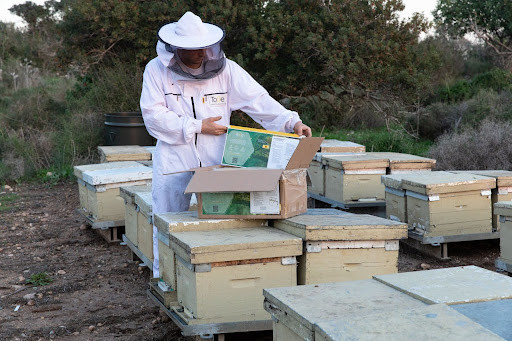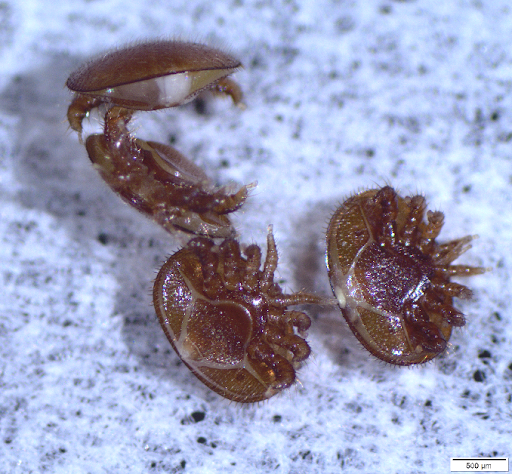Saving the Hive: ToBe Leads Fight Against the Global Bee Crisis

The world's honeybee population is in peril, and the implications reach beyond the hive. With the crisis threatening the sustainability of beekeeping as an industry and the global food system itself, environmentalists, agricultural leaders, and governing bodies are becoming increasingly concerned. ToBe, an agri-tech innovator focused on ecological and nutritional resilience, responds to this mounting emergency. It introduces a science-backed solution that can redefine how humanity protects its most vital pollinators.
ToBe has observed the alarming trends facing apiarists worldwide, including the loss rates of bee colonies, which have reached over 60% across the United States. These losses have rippling effects across the agricultural value chain. Pollinators affect 35% of global agricultural land, which supports the production of over 80% of the leading food crops globally. According to Bayer Global, the estimated market value at stake due to pollinator decline is between $235 and $577 billion annually.
Many might assume that stressors such as pesticides, habitat loss, and climate change primarily contribute to colony collapse. This assumption is true, to some extent. However, ToBe's internal research and collaboration with entomological experts have revealed that the origin of the devastation lies in the Varroa destructor. This parasitic mite has become the honeybee's most lethal adversary.
This invasive species feeds on the bees' fat tissue and transmits a cocktail of viruses directly into their bloodstream, bypassing the bees' natural defenses. The result is a weakened colony that can't withstand even mild environmental pressures.
The problem doesn't stop there. The traditional approach to managing Varroa infestations, such as flooding hives with miticides, has become ineffective and harmful. These chemical treatments must balance between being strong enough to kill mites, but not so toxic that they destroy the bees themselves. With low efficacy and growing resistance among mite populations, the traditional model has reached its limits.
ToBe then created a solution to control Varroa more effectively and reduce collateral damage to bees, their environment, and the honey they produce. Founded to secure human nutritional stability through the protection of honeybee pollination services, its mission is to free bees, beekeepers, and agriculture from the devastating impact of Varroa mites through technological innovation.
This mission led to the development of HiveMaster. It's an innovative device that delivers precision treatment inside the hive while requiring no human intervention once installed. HiveMaster is a compact, electro-mechanical system that can convert any conventional hive into a smart, self-regulating environment. It combines proprietary software, real-time sensors, and an Internet-of-Things (IoT) infrastructure to monitor hive health and dispense gas-phase anti-Varroa compounds with exact timing and dosage.
Varroa mites (source: ToBe)

"We came up with this breakthrough because we don't want to overwhelm the hive with chemicals. We want to target the mites precisely when and where they are most vulnerable. This is how we minimize pesticide exposure while amplifying impact," ToBe CEO Eric Joely states.
HiveMaster's design philosophy revolves around adaptability and intelligence. Its internal sensors detect the state of the colony, such as temperature, bee activity, and environmental conditions, and adjust the treatment accordingly.
"As a beekeeper, dealing with this impossible problem over many years, and seeing businesses perish as a result, I was ready to join the company to fix this problem from the root," says Avner Einav, VP of Product. "ToBe promises technology to ensure a better future for the farmers, the industry, and of course the bees themselves."
A connected mobile app provides beekeepers with real-time updates, helping them make informed decisions while reducing the need for frequent manual interventions. With its innovative features, HiveMaster is well-positioned to transform beekeeping into a precision agricultural practice, mirroring the broader trend toward data-driven sustainability in farming.
However, how effective is this solution in practice? ToBe sought to answer that question through rigorous, third-party validation. In collaboration with the Department of Entomology at an American university, it conducted a field study comparing HiveMaster to traditional treatment methods using acaricide strips.
The results were eye-opening. Colonies treated with HiveMaster showed a 95% reduction in Varroa mite infestations, outperforming colonies treated with widely used beehive strips, which achieved only 41% efficacy. The control group, untreated, fared even worse at only 11%.
Besides outperforming in terms of mite reduction, HiveMaster also demonstrated remarkable consistency across all test hives. It overcame the erratic performance seen with chemical strips. In addition, the HiveMaster's gas-phase application overcomes the challenge of mites hidden within the capped brood, breaking the parasite's life cycle.
Interestingly, the study also unveiled that HiveMaster-treated colonies maintained their strength throughout the trial, with no adverse impact on the number of frames occupied by bees. This contrasts with some conventional treatments that can compromise hive vitality. Additionally, reducing treatment duration translates into more efficient operations and less labor-intensive management for beekeepers. Overall, the device offers a significant return on investment ecologically and economically.
With regulatory approval secured in Israel and expansion plans underway in the US and other key markets, ToBe's HiveMaster is bound to become a foundational technology in the global effort to stabilize pollination systems. The company is already rapidly scaling up production in anticipation of broader regulatory green lights.
"At the end of the day, everything we do is to protect bees and safeguard the future of food," Joely remarks. "HiveMaster is our answer to one of agriculture's greatest threats, and it proves that with the right technology, we can restore balance between nature and industry."
© Copyright IBTimes 2024. All rights reserved.




















